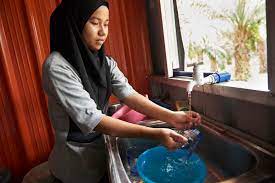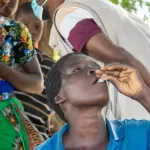
Date: January 20, 2024
A recent Census Bureau survey, reported by the Centers for Disease Control and Prevention (CDC), has revealed a concerning gender disparity in the prevalence of long COVID, with nearly twice as many women affected as men. According to the survey, 6.6% of women reported long COVID compared to 4% of men. Researchers are now delving into the reasons behind this discrepancy and exploring the impact of long COVID on female reproductive health.
Beth Pollack, a research scientist specializing in long COVID at the Massachusetts Institute of Technology’s Department of Biological Engineering, notes that sex differences in infection-associated illnesses are not uncommon. “It informs research priorities and the lens with which we understand long COVID,” she said.
Researchers are particularly interested in the potential role of sex hormones in immune responses to infections, a factor that may contribute to the observed gender disparity. Pollack’s 2023 review highlighted links between long COVID and conditions such as myalgic encephalomyelitis/chronic fatigue syndrome (ME/CFS), postural orthostatic tachycardia syndrome (POTS), and Ehlers-Danlos syndrome (EDS), shedding light on the interconnectedness of these disorders.
The #MEAction advocacy group emphasizes the parallels between long COVID and ME/CFS, stating that advancements in long COVID research could be accelerated by acknowledging the work done on ME/CFS over the years. The CDC reports that ME/CFS affects women about twice as much as men, underscoring the need for a comprehensive understanding of gender-specific implications.
Recent research by the Tal Research group at MIT is delving into the connection between long COVID and infection-associated illnesses. Their study aims to identify biomarkers that predict recovery and advance available treatments. Additionally, the MIT program “SEXX + Immunity” is fostering collaboration among scientists exploring the role of female and male biology in immune responses to infection.
Despite progress, barriers to understanding and treating long COVID persist. Historical biases in medicine related to women’s health still impact clinical descriptions and diagnoses. Dr. Alba Azola of Johns Hopkins Medicine warns against overlooking long COVID in female patients, cautioning that symptoms of infection-associated chronic illness can mimic menopause, leading to misdiagnoses.
The Bateman Horne Center in Salt Lake City, Utah, has been at the forefront of addressing long COVID and related conditions. Jennifer Bell, a certified nurse practitioner at the center, notes a hormonal connection in patients, with symptoms worsening in the week prior to menstruation.
As researchers continue to uncover the complexities of long COVID, personalized medicine is emerging as a potential solution. Beth Pollack emphasizes the need to identify phenotypes within and across overlapping illnesses, tailoring treatments to individuals for more effective outcomes.
While the road to understanding and treating long COVID remains challenging, individuals like Annette Gillaspie, a nurse grappling with the effects of the condition, express hope for a resolution. As research progresses, the medical community strives to unlock the mysteries of long COVID and provide relief to those affected, particularly women facing the brunt of this lingering illness.










